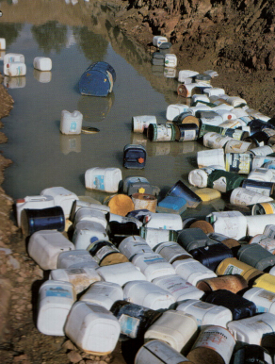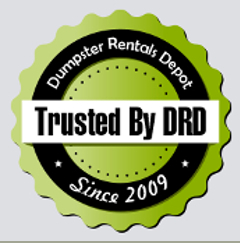Holbrook, MA - toxic playground

The Pastures also held a kind of science-fiction fascination for many of the young local residents. A strange jellylike goo referred to as "green slime" or "moon glob" provided them with hours of fun hurling handfuls of the gunk at each other like snowballs.
There were also plenty of empty industrial barrels-perfectly suited to a joyride downhill. The Pastures was a kid's paradise. Even parents stayed away-until 1982 when the EPA placed this land near the top of its national list of high-priority hazardous waste sites.
Until then residents had no idea that the empty barrels and the green gunk that provided their children with so many hours of fun were as lethal as a loaded gun. They did not know enough about the hazards of waste from poisonous chemicals to realize that these deadly playthings had come from the Baird & McGuire pesticide manufacturing plant located at the edge of The Pastures.
The events that took place were similar to those in Times Beach and other stricken cities. Between 1979 and 1983, according to the Massachusetts Department of Public Health, twenty-four men from Holbrook died of lung cancer. Others during the same period were dying of bladder cancer at three times the average rate. And more than twice the average number of women from Holbrook died of cancer of the female organs.
Despite the high rates of death and health problems, however, many residents refused to get involved in the fight to clean up their town. But others did enough to make up for the many who did nothing. Joanne 0 'Donnell was one of these.
All five of her now-grown children had played at The Pastures when they were young. Four of them wound up with endocrine (gland) problems. One daughter had a tumor on her pituitary gland. Another had her spleen removed in 1984.
As a boy, O'Donnell's eldest son Mark had been known for his feisty moon-glob fights and his thundering downhill rides in the big metal drums. He even worked at the nearby pesticide factory one summer while in high school. Then years later at age twenty-seven, Mark came down with "some crazy pneumonia that nobody could figure out," O'Donnell said.
Esther Ross, a resident of nearby Randolph, Massachusetts, says she became worried in 1981 when she realized she was attending a lot of funerals. "The people next door," she told a reporter, "were stricken by cancer, and the people next door to them and next door to them. We had a six-year-old pass away from cancer in the neighborhood and a twenty-year-old."
Together O'Donnell, Ross, and Leah Abbott formed a group called People United to Restore the Environment. One day while the pesticide factory was still operating, Abbott marched right into president Baird's office and asked to see the poisonous chemicals firsthand.
In 1983 town officials forced the plant to close. But that was not the end of the scare. Frightening bulletins and warnings continued. The EPA found more toxic wastes from deadly chemicals such as arsenic, DDT, and chlordane in the soil and water around the factory. Greatest was the danger to the drinking water. Three of the town's wells were located next to Baird & McGuire.
Early in 1985 chemical waste was found leaking into the nearby Cochato River. And in later tests the river's sediment also produced traces of poisonous waste from arsenic and another deadly chemical, naphthalene. During the summer of 1985 the EPA became even more alarmed when they discovered concentrations of dioxin at the pesticide factory.
Abbott organized a public meeting in 1985 at Holbrook High School. There EPA officials faced three hundred angry residents who demanded to know why, after three long years, Baird & McGuire still had not been cleaned up. Soon after the meeting, the EPA agreed to all of the group's demands. In August, workers erected a new chain link fence with a barbed wire top, and installed warning signs around the pesticide plant.
Many residents of Holbrook, including those who had worked so hard on the cleanup campaign, decided to continue living in the town. "Where am I going to move that it's not going to crop up in my backyard again?" Leah Abbott responded to a visiting reporter. "Where is safe?"
- Published: 2013-04-24T11:08:33-07:00
- Author: Anna Krupp, Dumpsters & Roll Off Container Consultant




